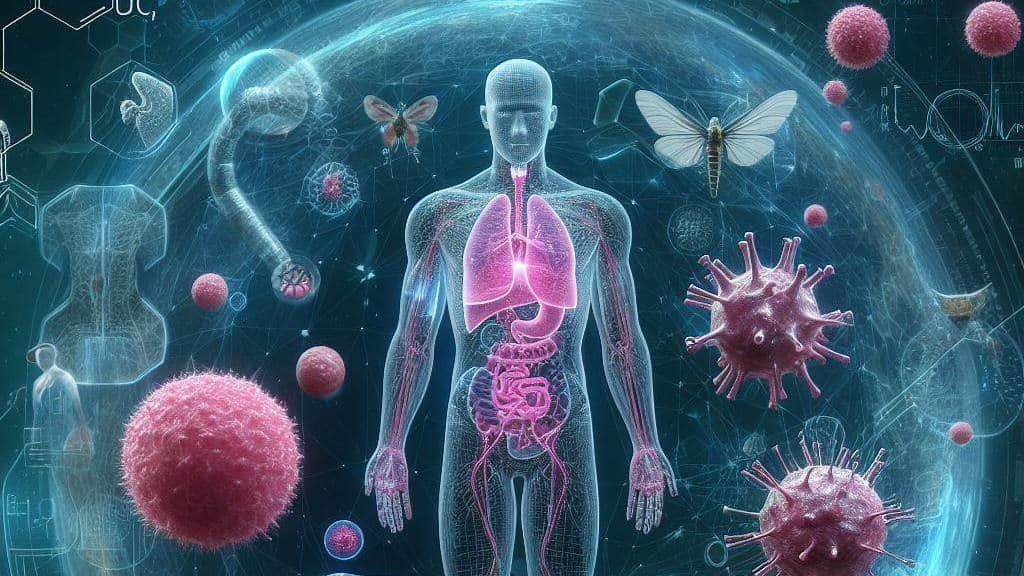AI Model ‘Ceograph’ Achieves Precision in Predicting Cancer Outcomes from Tissue Samples


In Brief
A newly developed medical AI model Ceograph can predict outcomes for cancer patients based on tissue samples.

Researchers at UT Southwestern Medical Center (UTSW) developed a artificial intelligence (AI) model – named Ceograph – that demonstrates the ability to predict outcomes for cancer patients based on tissue samples.
The development represents a chance for the utilization of AI to forecast the likely trajectory of the disease and tailor personalized treatment strategies. As described in the journal Nature Communications, the approach scrutinizes the spatial configuration of cells within tissue samples.
“Cell spatial organization is like a complex jigsaw puzzle where each cell serves as a unique piece, fitting together meticulously to form a cohesive tissue or organ structure. This research showcases the remarkable ability of AI to grasp these intricate spatial relationships among cells within tissues, extracting subtle information previously beyond human comprehension while predicting patient outcomes,” said study leader Guanghua Xiao, a professor at the University of Texas Southwestern Medical Center in the US.
According to researchers, in the realm of pathology — routine collection of tissue samples from patients has long been a staple for diagnosis. These samples, typically placed on slides for examination by pathologists, serve as crucial components in the diagnostic process.
However, as Dr. Xiao highlights, this conventional approach is not without its drawbacks – it is time-consuming, prone to variations in interpretation among pathologists and may miss subtle nuances in pathology images that could hold pivotal clues to a patient’s health.
Addressing these challenges, Dr. Xiao and his team developed AI model Ceograph. Unlike its predecessors, the AI model aims not only to identify cell types or assess cell proximity but to replicate the intricate aspects of a pathologist’s approach to interpreting tissue images.
Dr. Xiao emphasizes that while previous AI models have excelled at certain tasks, they fell short in capturing the complexity inherent in a pathologist’s role. This complexity involves discerning patterns in cell spatial organization and eliminating extraneous “noise” in images – factors crucial for accurate interpretations.
Ceograph’s Superiority Over Traditional Methods
Dr. Xiao added that the Ceograph sets itself apart by mimicking the cognitive processes of pathologists when reading tissue slides. It begins by detecting cells in images and determining their positions. From there, the AI model goes beyond mere identification, delving into the intricate realm of cell types, morphology and spatial distribution.
The new AI model can create a detailed map that helps analyze how cells are arranged, distributed, and interact with each other, marking a step forward in using AI to mimic the nuanced skills of human pathologists.
The researchers put the tool to test in three real-world clinical scenarios using pathology slides. In the first scenario, Ceograph was employed to differentiate between two subtypes of lung cancer—adenocarcinoma and squamous cell carcinoma.
The tool was also utilized to forecast the chances of potentially harmful oral conditions (precancerous lesions in the mouth) developing into full-fledged cancer. Lastly, the research team pinpointed which lung cancer patients were most likely to positively respond to a specific class of medications known as epidermal growth factor receptor inhibitors.
According to the researchers, in each scenario, the Ceograph model outperformed traditional methods by a good margin in predicting patient outcomes.
Importantly, the cell spatial organisation features identified by Ceograph are interpretable and lead to biological insights into how individual cell-cell spatial interaction change could produce diverse functional consequences, Xiao said.
He further emphasized the growing role of AI in medical care, underscoring its potential to enhance the efficiency and accuracy of pathology analyses. This method, he added, holds promise for streamlining targeted preventive measures and optimizing treatment selection for individual patients.
Disclaimer
In line with the Trust Project guidelines, please note that the information provided on this page is not intended to be and should not be interpreted as legal, tax, investment, financial, or any other form of advice. It is important to only invest what you can afford to lose and to seek independent financial advice if you have any doubts. For further information, we suggest referring to the terms and conditions as well as the help and support pages provided by the issuer or advertiser. MetaversePost is committed to accurate, unbiased reporting, but market conditions are subject to change without notice.About The Author
Kumar is an experienced Tech Journalist with a specialization in the dynamic intersections of AI/ML, marketing technology, and emerging fields such as crypto, blockchain, and NFTs. With over 3 years of experience in the industry, Kumar has established a proven track record in crafting compelling narratives, conducting insightful interviews, and delivering comprehensive insights. Kumar's expertise lies in producing high-impact content, including articles, reports, and research publications for prominent industry platforms. With a unique skill set that combines technical knowledge and storytelling, Kumar excels at communicating complex technological concepts to diverse audiences in a clear and engaging manner.
More articles

Kumar is an experienced Tech Journalist with a specialization in the dynamic intersections of AI/ML, marketing technology, and emerging fields such as crypto, blockchain, and NFTs. With over 3 years of experience in the industry, Kumar has established a proven track record in crafting compelling narratives, conducting insightful interviews, and delivering comprehensive insights. Kumar's expertise lies in producing high-impact content, including articles, reports, and research publications for prominent industry platforms. With a unique skill set that combines technical knowledge and storytelling, Kumar excels at communicating complex technological concepts to diverse audiences in a clear and engaging manner.





















































